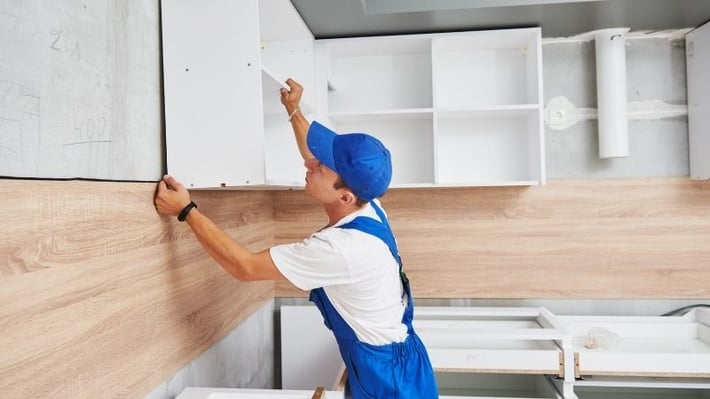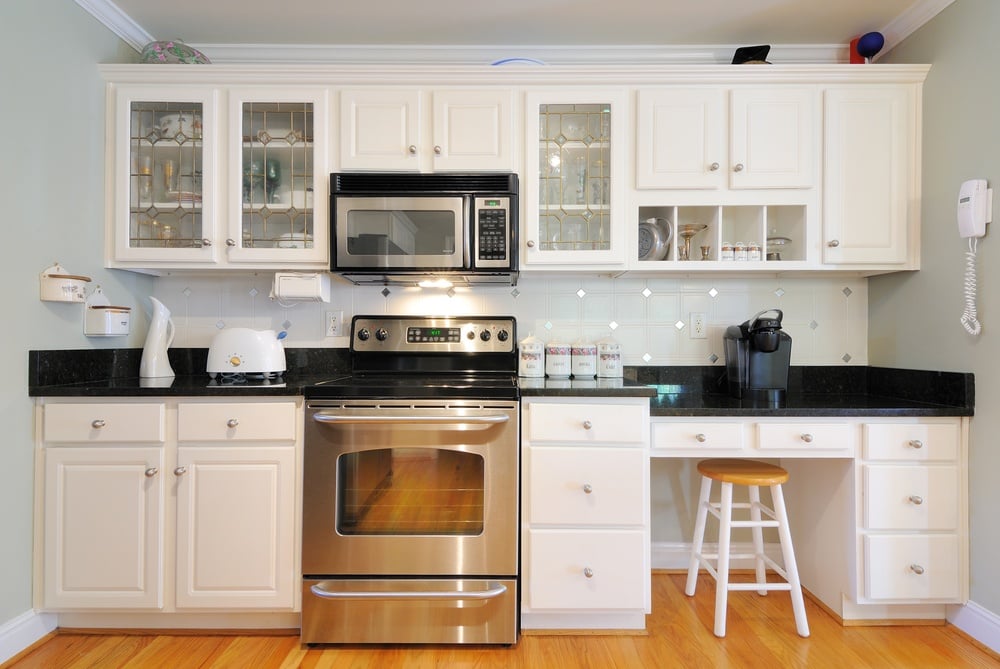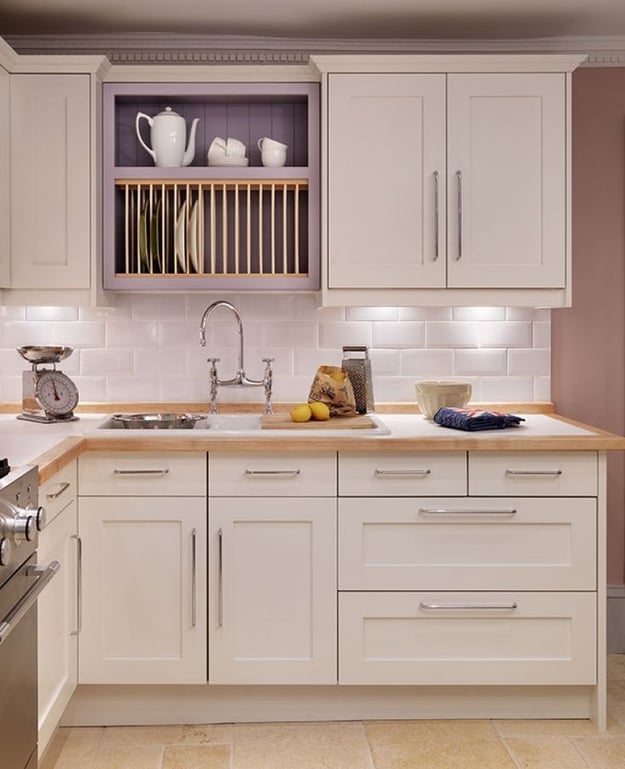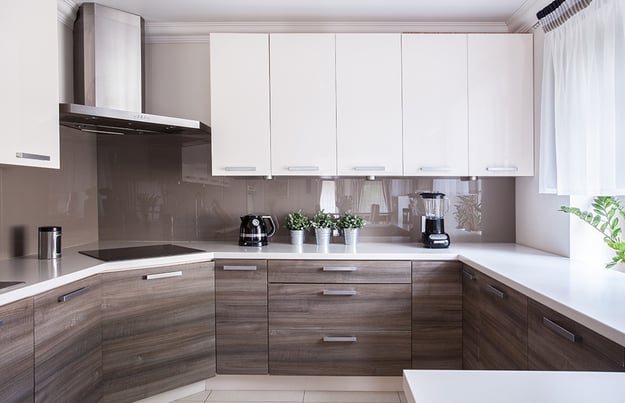How to Install Kitchen Cabinets: 2022- Easy Guide .
Here are easy steps to install kitchen cabinets in your kitchen. One of the most important decisions you will make in your home is what type of kitchen cabinets you’ll install. This can be a tough decision because it’s hard to know exactly what type of kitchen design you want for your space. There are a few different kinds of kitchens, but there are three main types: traditional, contemporary and island. To help you decide, let’s look at what each type offers so that you can pick the right one for your needs.

Kitchen Cabinets
: Traditional to Contemporary
The two main types of kitchens are traditional and contemporary. Traditional kitchens typically use cabinets made of wood, stone or tile. Contemporary kitchens often use open shelves that can be installed in any style. The three kitchen cabinet types are:
-Traditional: Cabinets made from wood, stone or tile are typically more functional and offer more storage space than what is found in contemporary cabinets. They also have a more classic look that many people prefer over the sleek lines of contemporary cabinets
-Contemporary: These cabinets feature open shelves that can be used to create unique shelving systems that are uniquely your own. They offer less storage and a sleeker look.
-Island: Island kitchens start with a large island in the middle of the room which is usually between 28 and 36 inches high and 24 to 30 inches wide. The island is the centerpiece of these kitchens with smaller islands built around it for additional counter space. This type of kitchen design is ideal for creating an overwhelming amount of counter space in one area for cooking, creating or entertaining guests

Traditional Kitchen Cabinets
Traditional kitchen cabinets are the most common type of kitchen cabinet. This type can be found in a variety of styles and designs. The traditional type is primarily made up of wood or wood paneling, which provides it with a classic look that many people love. For this design, you’ll also find plenty of drawers, cubby holes and cupboards in your space.
Contemporary Kitchen Cabinets
Contemporary kitchen cabinets are perfect for modern kitchens. These are more streamlined than traditional cabinets, making them more efficient to clean and easier on the eyes. The style is sleek and minimalist with a focus on angles, corners, curves and straight lines. They’re also a bit more expensive than traditional cabinets because they’re made from higher quality materials.
Island Kitchen Cabinets
Islands are a great choice for anyone who wants a spacious kitchen. They have plenty of room to store food and cook. The downside is that islands aren’t very practical for places with small kitchens or limited storage space.
Finishes of cabinetry
The first deciding factor is the finishes of the cabinets. Not all kitchens have the same needs, but most need at least one type of finish.
Traditional kitchens have wood or pine cabinetry with glossy paint and a veneer. They can be painted in any color but tend to match white appliances. This style is great for anyone who wants an old-fashioned look, but it does not work well with modern styles.
Contemporary kitchens are typically made of high-quality engineered wood with a stain or two coats of polyurethane on top of them. You can paint these cabinets any color you want and they match nicely with stainless steel appliances and white cabinetry. They also work well with modern styles, so this is a good option for those who want their kitchen to blend in seamlessly with their home’s interior design.
Island kitchens are somewhat similar to contemporary kitchens because they both come with many options in terms of finish and appliance choices, but island cabinets are usually found in more traditional kitchens that don’t follow the strict design rules of traditional designs.
These cabinets have a variety of finishes like cherry, maple, oak and vanilla, so you’re sure to find something that matches your style regardless of what else you choose for your home’s interior design scheme.

What does it cost?
The cost of a kitchen cabinet is determined by the size and style of your cabinets. For example, an island cabinet will cost less than a traditional one because it is smaller in size. You can expect to pay anywhere from $2,000 for the smallest sizes to $30,000 or more for larger kitchens. So, when it comes to the price for your kitchen cabinets, you’ll have to consider how much space you want to cover.
DIY vs Hiring a Contractor
The first decision you will need to make is whether or not to DIY your kitchen cabinets. If you are handy and you have the time, this could be a good option for you. However, if you’re not into DIY projects there are other options available. Hiring professional contractors can be a great way to get high-quality work done quickly and at a reasonable price.
Plus, many people like the fact that they don’t have to deal with the stress of the project themselves. Plus, professionals know how to install kitchen cabinets properly so it will look just as amazing as it should when it’s finally finished.
Install kitchen cabinets yourself.
A traditional kitchen is going to have long cabinets with doors that swing out from the wall. This type of design is good for those who want a classic look and don’t mind doing some DIY work. You’ll need less room for this style of cabinetry because it has fewer drawers and shelves.
If you choose to go with a contemporary design, you will have shorter cabinets that are flush against the wall. These types of cabinets are more modern in appearance and typically come with a lot of built-in storage space. They can also be customized to fit your needs, which is great if you want a specific layout or color scheme that isn’t available in traditional kitchens.
An island kitchen is ideal for those who like open floor plans because they offer lots of room for dining or family activities. These kitchens usually have taller cabinets with many shelves and drawers so there’s plenty of space for cooking utensils and food prep.
Plus, they typically have open shelving on either side of the sink so there’s more room to access your dishes without having to walk around the whole kitchen area.
To decide which type best fits your desired design, think about what features you prioritize most in your kitchen and focus on the features offered by each type of design before making a choice about what works best for you.
12 Simple Steps to Installing Kitchen Cabinet Systems
You’re tired of looking at that ugly, outdated kitchen. You have big visions for the home you’ve always dreamed of and now it’s time to make them a reality. You’re eager to get started but have no idea where to start. Installing kitchen cabinet systems is an excellent first step in the process of turning your old kitchen into a beautiful new one, and all it takes is some planning and some hard work. Here are 12 easy steps to install kitchen cabinet!
Make a list of necessary items
Before you start to install kitchen cabinets, make sure you have all of the necessary items on hand. You’ll need a saw or other power tool to cut through the cabinets, a drill with bits and drivers, screws, brackets (which should be provided with your new cabinets), and a tape measure.
Choose the layout for your kitchen
Before you start to install kitchen cabinets, you’ll need to choose the layout for your kitchen. If you’re renting, this will be easy but if you own your own home, it’s a more complicated process.
It’s important to plan ahead so that when you install the cabinets, they can be easily taken down and put back up again in the event that you move or want to change the layout of your kitchen at any time in the future.
1) Draw out a rough plan on paper of how you want your new kitchen space to look like. Consider things like where the stove will go, what kind of countertops and lighting fixtures are best for your needs, and where you would like most of your appliances to be placed.

2) Once you have an idea of what kind of layout appeals to you most, create a physical blueprint with measurements showing each wall and appliance placement on graph paper. This will help show contractors exactly what work needs done and give them exact measurements for things like electrical and plumbing during construction phase.
3) Measure everything out as accurately as possible with a measuring tape before creating your design on graph paper. Remember: The more accurate the measurements are beforehand, the less money it costs overall when building begins!
4) Consult with friends or family members (or even just online forums!) about which layout they think looks best in order to get feedback about their opinions before finalizing your decision. Feedback from others can help narrow down which option is best
Plan the material for your kitchen cabinets
The first step to installing kitchen cabinet systems is to plan the material. Pull a piece of paper out and sketch out what your dream kitchen would look like. Include everything, from the color of the walls and flooring, to the size of the windows. Plan out every detail so that you can be sure you’re getting exactly what you want for your new kitchen.
Once you’ve decided on a design, it’s time to get some materials together. You’ll need wood or melamine boards for cabinets, screws or nails, paint or sealant, and cabinet pulls.
You need to do some research in order to find the best materials for your cabinets. There are many different types of cabinets made from different materials and each has its own pros and cons.
Doing your research will help you choose fasteners with which you’ll have no problems going forward and choosing paints that won’t chip away easily when they come into contact with moisture in the air.
Mark out the area for your kitchen
Before ordering your cabinets, it’s important to measure the space where you’ll be installing them. This will allow you to order kitchen cabinets that will fit your space. It doesn’t matter if you’re designing a new kitchen or remodeling an old one, you need to know how much space you have!
Once the room is measured and marked out on the floor, make sure to check for any obstacles that might want to be moved before construction begins, such as pipes or other furniture.
Measure and cut all materials
The first step to installing kitchen cabinet systems is getting the right materials. You will need a measuring tape, a pair of scissors, and some 2x4s. Take your measurements and cut the 2x4s to size.
Install cabinets and other fixtures
The first step to install kitchen cabinets is to install any other fixtures, such as windows and doors. Next, measure the cabinets you have purchased and mark the wall where they will be installed. Remove the old cabinets and clean the walls.

Clean up and enjoy!
1) Clear out your space
Before you to install kitchen cabinets, you need to make sure that you’ve got a clear work area. You’ll want to move everything away from the wall surface and if necessary, paint over the old surface.
2) Measure and mark up the wall
Next, measure and mark the surface where the cabinets will be installed. Use a level to ensure that each cabinet is level with one another. Use a pencil to draw lines on the wall where each measurement should go. Remember to measure twice, cut once.
3) Sand down any rough edges
If there are any sharp or rough edges on your walls, sand them down now before you install kitchen cabinets so they don’t scratch or hurt anyone in future. This step should also be completed before painting so that you don’t get any paint on your sanded surfaces.
4) Prime and paint
After sanding down any rough edges, prime and paint the entire area with an oil-based primer for acrylic latex paints since this type of primer provides excellent adhesion to both drywall and plaster for longer lasting paint jobs as well as improved durability over latex primers. Allow it plenty of time to dry before continuing with installation.
5) Install baseboards along walls
Install baseboards at the bottom of all four walls that you have drawn on in pencil with wood or metal ones that match your other trim in order for them to look nicer when finished. Ensure that they are
Conclusion
Installing kitchen cabinet systems is a big task, but it doesn’t have to be a big headache. Follow these simple steps and you’ll have a kitchen that you can enjoy for years to come!
If you want your kitchen to look beautiful, you need to install kitchen cabinets. They add an expensive look to your kitchen and can be easily customized with a wide range of materials and finishes. If you want to save money and take care of the job yourself, here’s how you get started on your own.
There are two ways to install kitchen cabinets. The first is DIY and the second is hiring a contractor. The first option is cheaper and takes more time and energy, but if you are DIY-ing you’ll have more control over the end result, which is a personal touch that is hard to find with a contractor.
If you want to hire a contractor, they will do the job quickly, but they will charge more than DIY-ing. With professional help, you can have your kitchen cabinets installed in a day and be ready to use them the same day.
Image Source: Restore and Kitchen and Bath Classics
Read More: Re-Inspired Kitchen